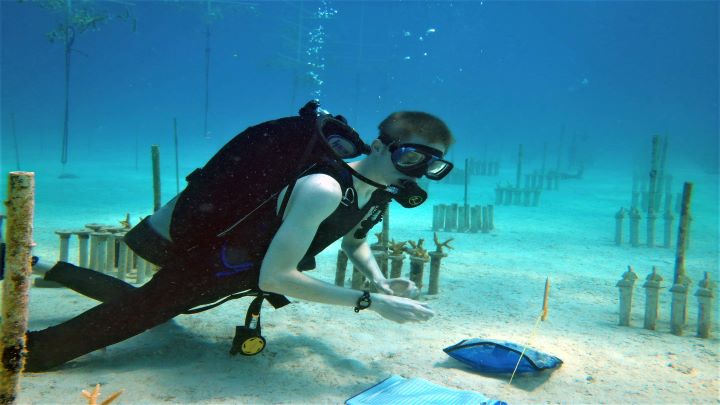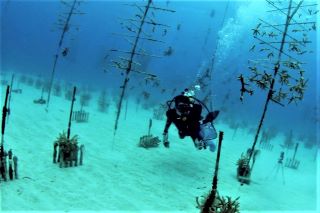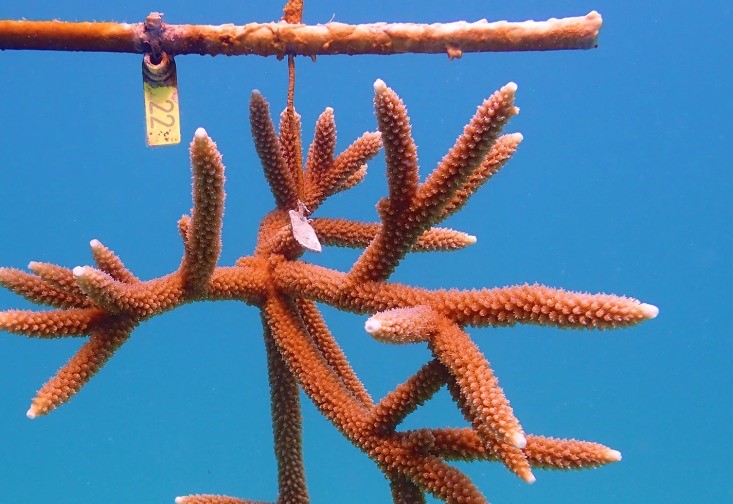TAMPA – Ocean warming is the leading culprit in coral bleaching, the process where the symbiotic algae that give corals their color are expelled and leave the ghostly reefs that have become a global symbol of the destruction of natural treasures amid rapid climate change.
Conservation scientists working to save the world’s reefs have turned to transplanting young coral to replace what has been damaged, but their efforts haven’t always been successful. Now, a national team of coral experts that includes USF Integrative Biology Assistant Professor John Parkinson have published a breakthrough study identifying colonies of heat-resistant coral that might give the world’s reefs a fighting chance.
Their work, recently published in the journal Proceedings of the Royal Society B, is being welcomed by conservationists as a new approach to help corals survive.

Dr. John Parkinson conducts research on coral fragments at the Mote Marine Laboratory coral nursery in Big Pine Key, Florida.
In a project led by the internationally renowned Shedd Aquarium, Mote Marine Laboratory and an array of research institutes and conservation agencies, the researchers focused their efforts on threatened staghorn coral, one of the most important corals throughout Florida and the Caribbean where it provides vital habitat for fish and other reef animals.
The research team studied 229 genotypes of staghorn coral growing at six nurseries from Broward County to the lower Florida Keys which are operated by Nova Southeastern University, Mote Marine Laboratory, the Florida Fish and Wildlife Conservation Commission, Reef Renewal, the Coral Restoration Foundation, and the University of Miami.
The team used an innovative Coral Bleaching Automated Stress System (CBASS) built onboard Shedd Aquarium’s research vessel, the R/V Coral Reef II, to determine at which temperature each coral showed signs of bleaching. The scientists then identified the most heat tolerant colonies, flagging them as individuals with the best chances for survival in warming oceans and high priority for use in restoration projects.

Dr. Parkinson dives into the Coral Restoration Foundation nursery in Tavernier, Fla.
Insights from the study provide a blueprint for the organizations working to generate climate-resilient reefs in Florida and will boost the success of restoration efforts globally, the researchers said. For Parkinson – who helped secure funding for the project and conceptualize the experiments – it is the second high-profile publication in a month to advance coral reef conservation science.
In early October, Parkinson was among an international group of scientists who reviewed the current best practices for restoring damaged reefs. Published in Nature Reviews Earth & Environment, the team made its case for nature-based approaches that give coral colonies a boost in their fight to survive warming seas. Identifying corals that have a genetic predisposition to best tolerate heat was among the recommendations detailed in that paper.

“I am excited the team could put into practice some of our earlier recommendations,” Parkinson said. “It is also encouraging that so many resilient colonies can be found throughout Florida’s coral nurseries.”
Material from the Shedd Aquarium was used in this report.
